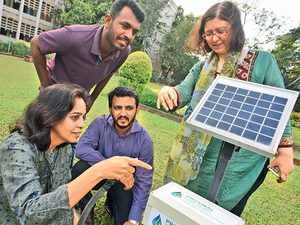› Forums › AgriTech › News(Agri) › Fieldwork like no other: Making of indigenous soil sensors
Tagged: AgriTech_V6, HW_H1
- This topic has 1 voice and 0 replies.
-
AuthorPosts
-
-
September 16, 2018 at 3:08 pm #24696
#News(Agri) [ via IoTForIndiaGroup ]
Some of the simplest problems to state are among the hardest to solve in practice. For a farmer, knowing when to irrigate can save a lot of energy and water. But it is quite hard to implement because it is not easy to get real time inputs about soil conditions. Farmers use their intuition when deciding to irrigate, thereby wasting water and other resources.

Rajul Patkar started thinking about low cost sensors for agriculture when she registered for PhD seven years ago at IIT Bombay. Sensors for agriculture is hard to develop, as they need to be highly specific for a job.
Without the specificity, they can provide wrong information. The sensors need to be rugged and low cost, while also consuming low energy.
Such products can be imported, but at such a high cost that farmers do not bother. “Without our own sensor,” says Patkar, “we cannot reduce the cost.”
An imported sensor of high quality can cost Rs 10,000. Proximal Soil Sense has a four sensor system with all the other components working at Rs 25,000. One acre needs two such systems. India now has around 7-8 million hectares of fields that use sprinklers.The National Committee on Plasticulture Applications in Horticulture estimates that 27 million hectares of fields are ripe for drip irrigation. If the technology works, the company will address a very large market.
-
-
AuthorPosts
- You must be logged in to reply to this topic.
